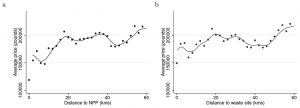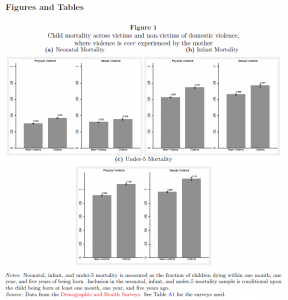
Michelle Kilfoyle and Hans Sievertsen
3rd November 2021
A-level results day this summer once again put grading systems under the spotlight in the UK, reigniting public debate on the potential need for grading reform.
Recent research from the University of Bristol’s Centre for Evidence-based Public Services (CEPS) and School of Economics, conducted in collaboration with the Danish Center for Social Science Research (VIVE), provides key information on the value of such high-stakes grades for students, and the possible effects of changes to grading systems.
In 2007, Danish high schools took the unusual step of re-coding students’ exam results for the previous year as part of a national educational reform. Consequently, while some of these students were awarded a higher Grade Point Average (GPA), a score that is critical to university applications, others saw their GPA fall.
The study took this unique opportunity to explore how grades affect student motivation. It showed that first-year high-school students ramped up their efforts in response to downgraded GPAs and, following this, were more likely to go to university. This was especially true for girls.
Knowing what motivates students to put more effort into their studies not only helps address under-performance. It can also help tackle social inequalities by identifying effective incentives for students whose parents have fewer means or resources than more advantaged families to promote their children’s performance at school.
Other studies on this topic have shown that financial rewards, such as vouchers, encourage students to work harder. Surprisingly, although grades are a more obvious form of ‘reward’, their effects on student behaviour are little researched and often overlooked in policy discussions.
This new study, conducted by Hans Sievertsen of CEPS and Ulrik Hvidman of VIVE, provides strong real-world evidence that grades do provide an incentive for study. While, intuitively, this may seem apparent, it is particularly hard to prove in practice.
Sievertsen and Hvidman analysed the grades of 26,759 high-school students whose first-year exams had been re-scored under the Danish Grading Reform of 2007.
Introduced by the Ministry of Education as part of efforts to align Denmark’s education system with those of other European countries, the new grading system for secondary and post-secondary schools worked on a 7-point scale, in contrast to the previous 10-point method.
Examiners, thus, had fewer grades to select from, meaning that work graded ‘9’ under the 10-point system, for instance, received ‘7’ under the new system. The new mark did not represent a re-evaluation of the student’s ability; it was purely a re-coding with both grades indicating the same level of performance.
Some students benefited from this complex re-coding scheme, and received a higher GPA, the score that shows a student’s average grade across all courses and which carries high stakes given its use in university admissions processes. However, others lost out and scored lower GPAs. For many students their GPA represents a passport to their post-school education and career of choice, and so potentially shapes their lifelong earnings.
The re-coding, therefore, raised big questions of how students would behave in response to the shock of being downgraded for the remainder of their schooling.
The analysis revealed that downgraded first-year students performed better in subsequent assessments. Those who were downgraded by one standard deviation (approximately one grade point) scored 8% of a standard deviation higher in second- and third-year assessments, which also carry greater weight towards final GPAs. This suggests that these students had upped their effort levels to meet a ‘target’ GPA.
High-achieving students (those with above average GPAs) and, perhaps surprisingly, girls made the greatest leaps in effort. Girls nearly cancelled out the effect of downgrading through increased efforts – making up 95% of the lost score, on average – compared with just 37% for boys. This may be partly explained by girls’ higher levels of non-cognitive skills, such as being more forward-looking in life.
The study brings new insights into the gendered effects of grades as incentives, while also showing that the relatively ‘small’ solution of placing more emphasis on high-stakes grades could be very effective in raising student performance and ambitions. This is likely to be true for other countries that rely on post-secondary assessment for university enrollment, such as the US and countries across Europe.
Authors
Michelle Kilfoyle – CEPS Science Writer
Hans Sievertsen – Professor of Economics, University of Bristol








